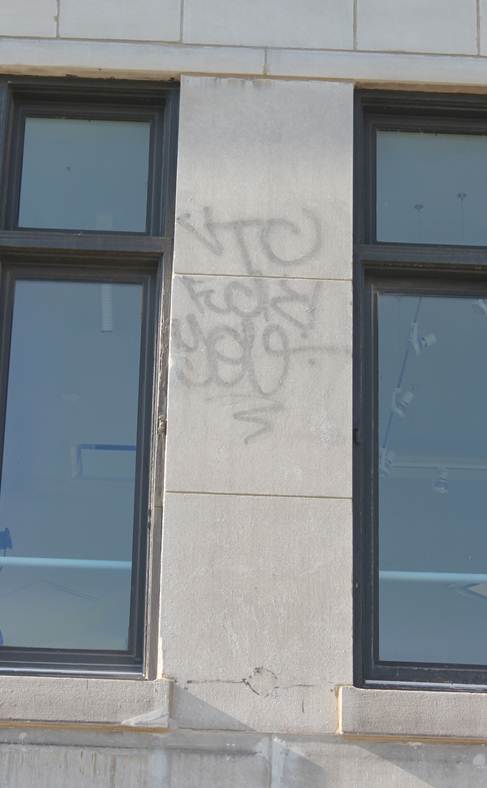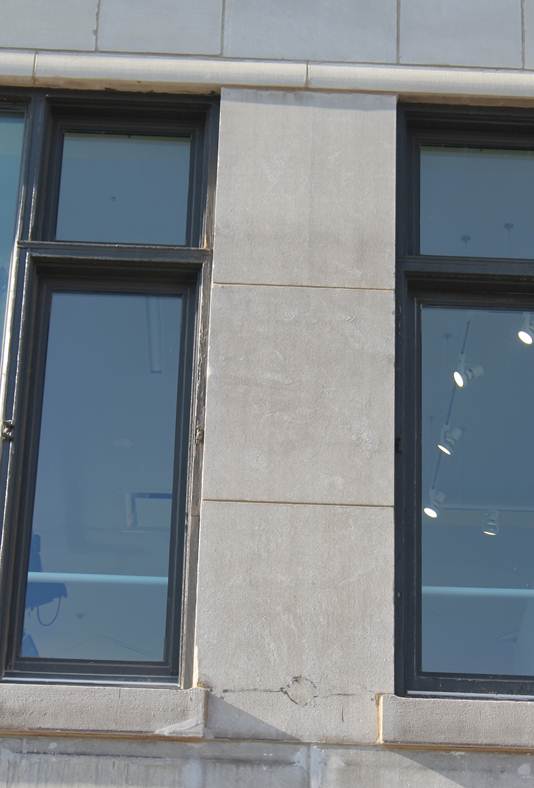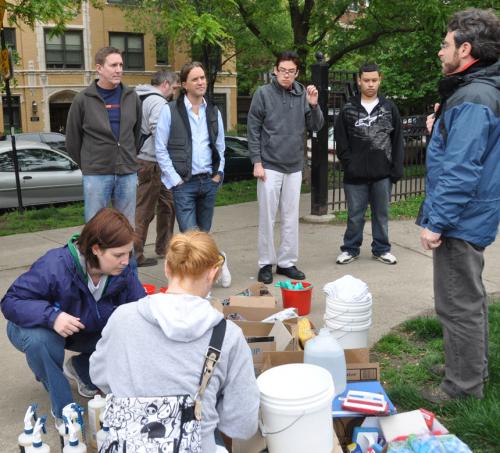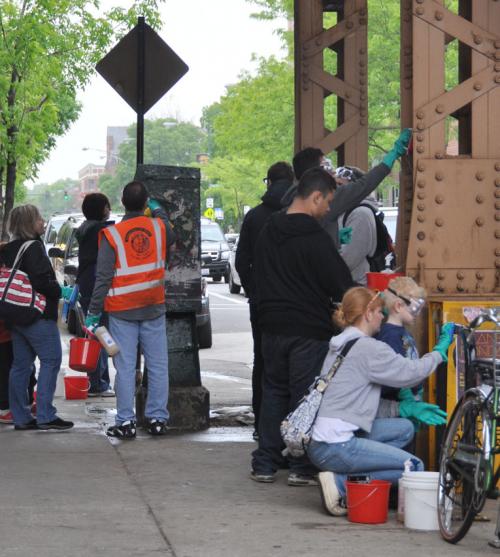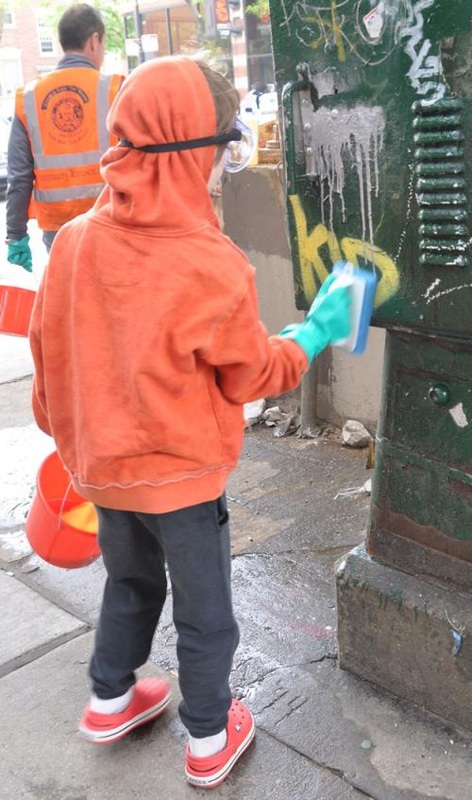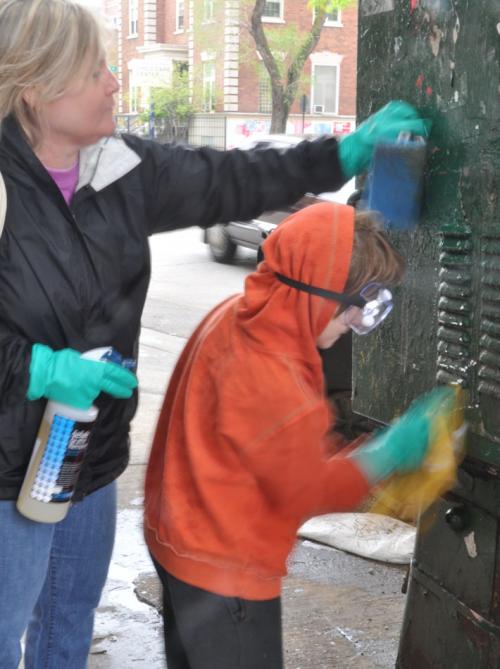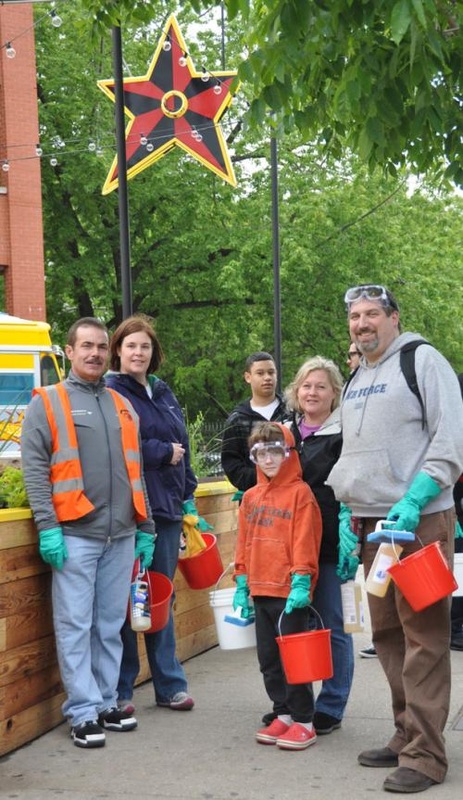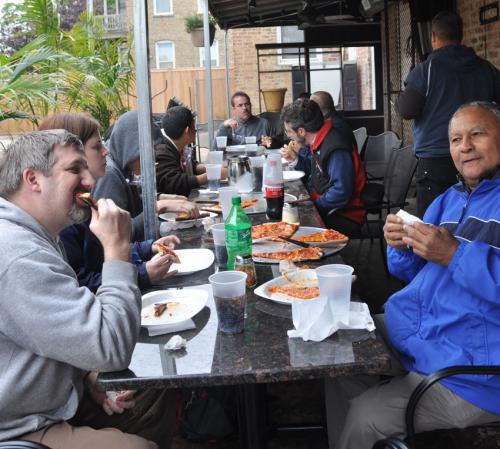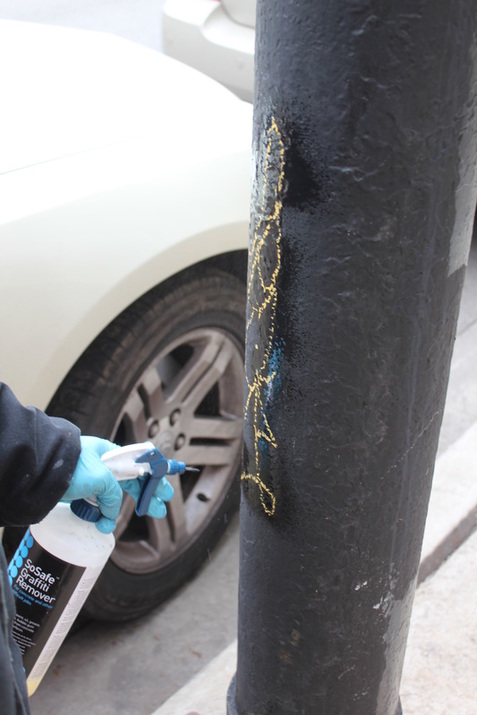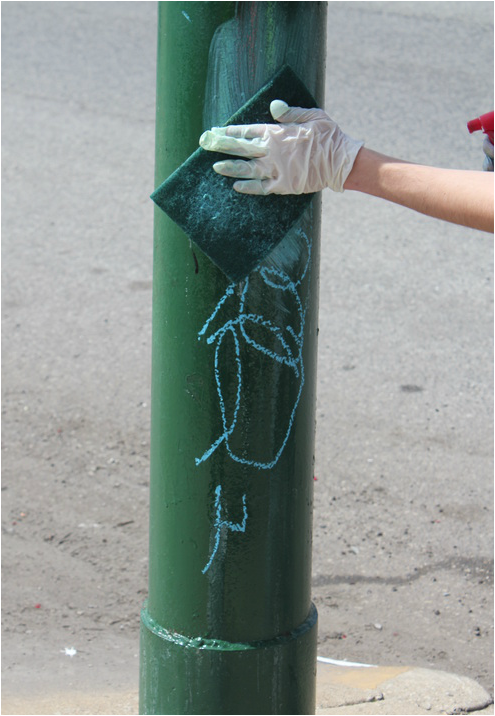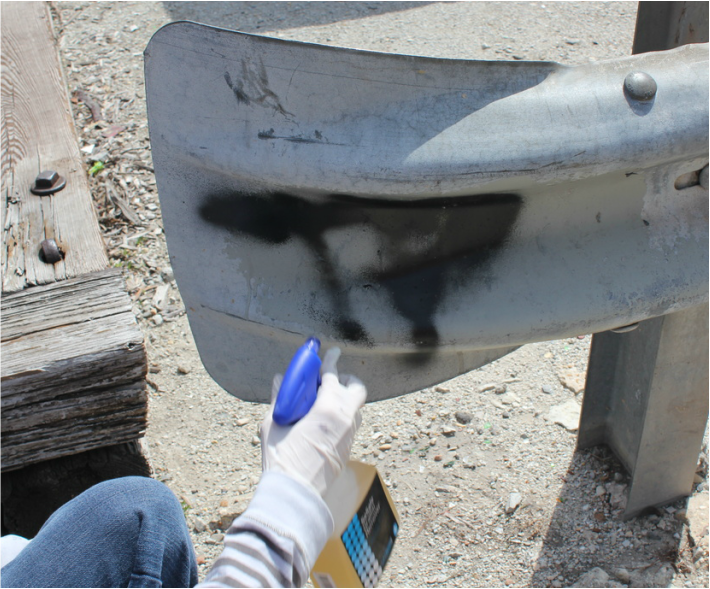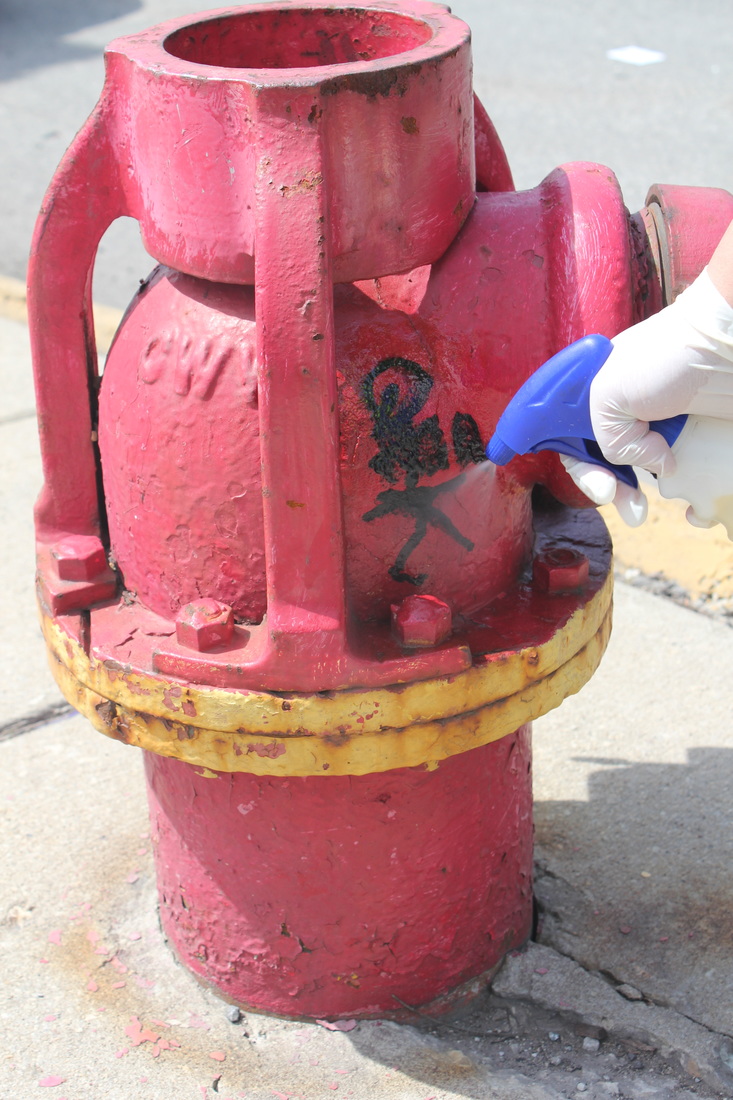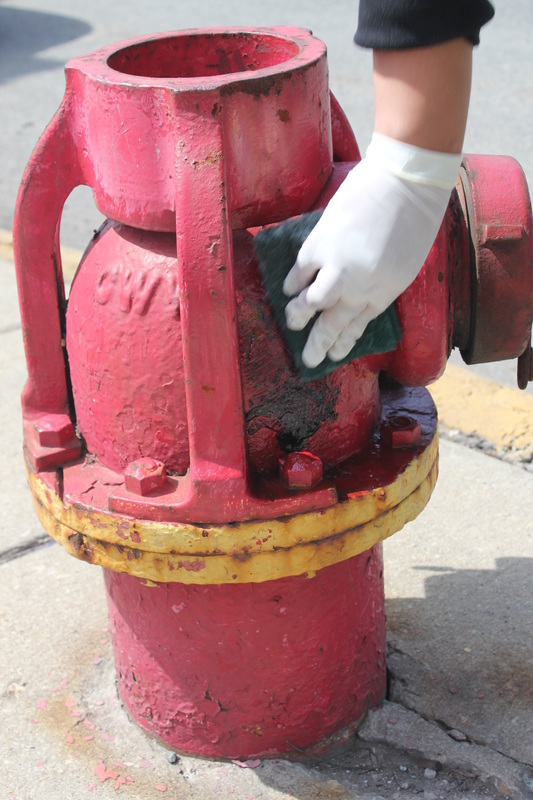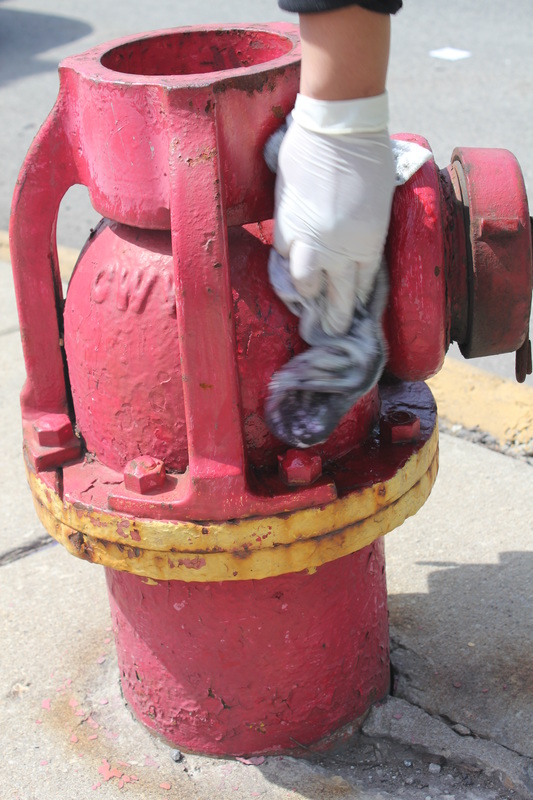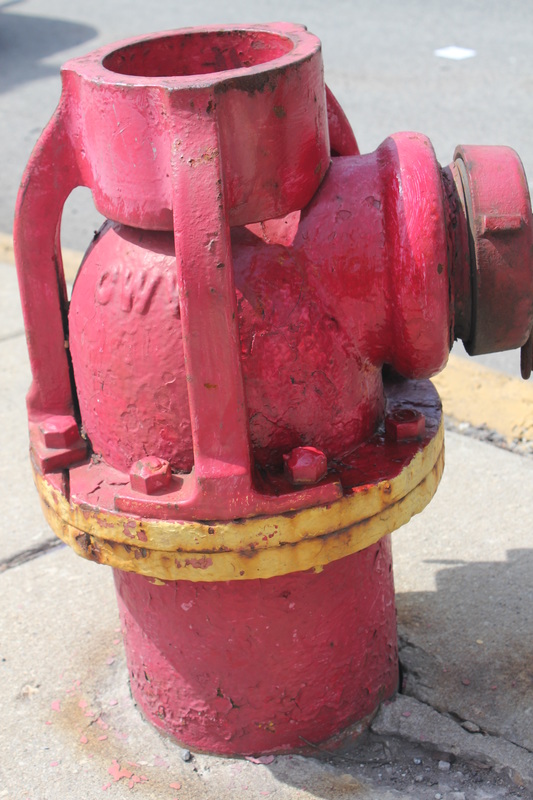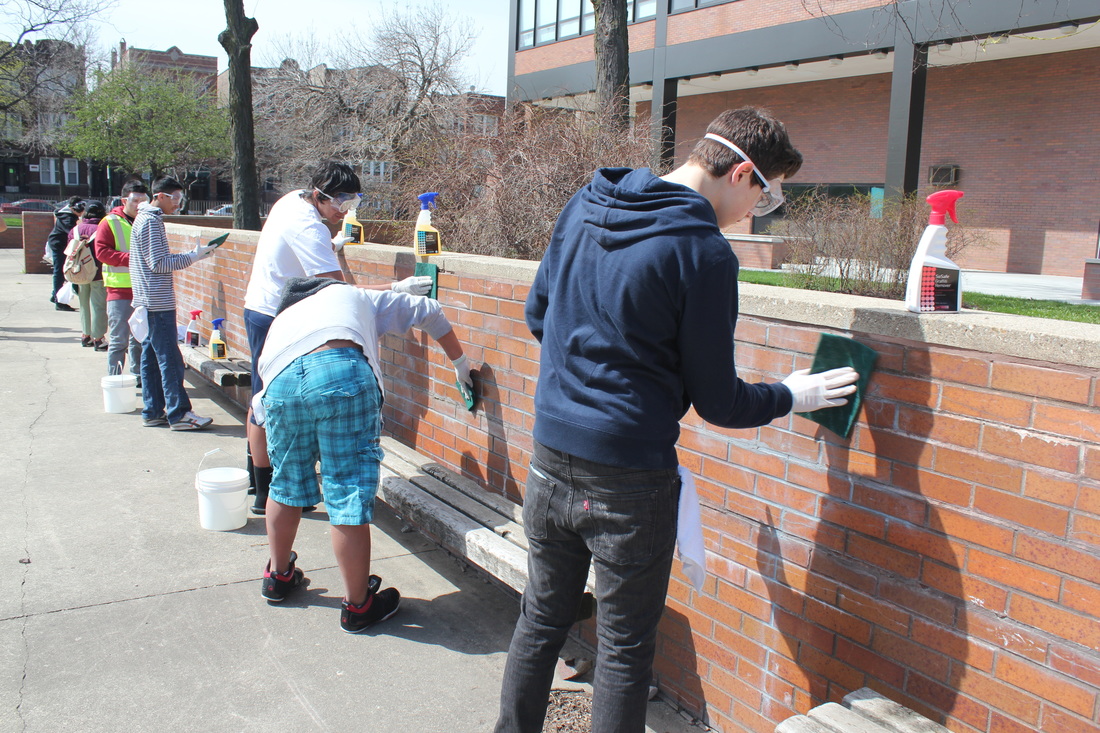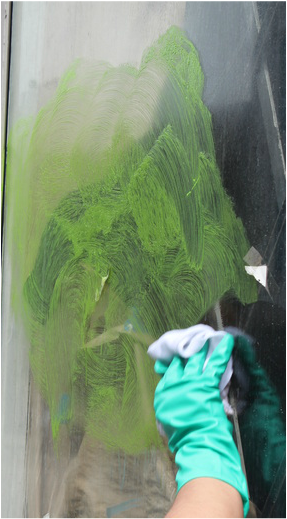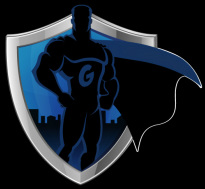In The News...
SOSAFE Graffiti Removers power Community Graffiti REmoval
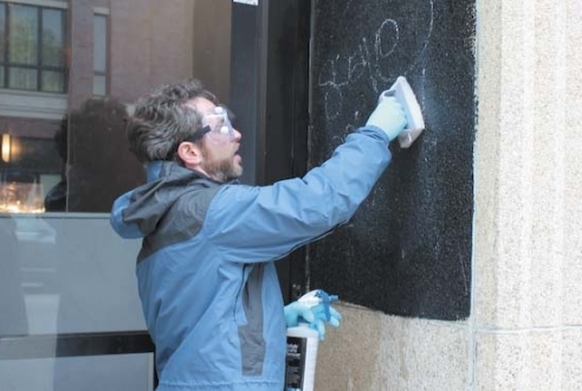
Graffiti Action Days
SoSafe graffiti-removal distributor Adam Natenshon is a tagger’s worst nightmare.
By Jake Malooley
TIME OUT CHICAGO
June 7, 2012
For most of his life, Adam Natenshon saw graffiti as the city’s wallpaper, an urban inevitability like traffic jams. But one day last summer, some taggers scaled the scaffolding surrounding a historic building his real-estate company was developing, the Hairpin Lofts, now home to the Logan Square Community Arts Center. The vandals decided the limestone of the landmark Morris B. Sachs Flatiron could use some black spray paint. One tag read FUCK YOU.
Natenshon tapped the site’s masons to remove the graffiti. Later in the week, the paint was gone, but a legible shadow remained. “The masons were like, ‘This is as good as it gets,’ ” recalls Natenshon, a compact, energetic 35-year-old with wavy salt-and-pepper hair and a neatly trimmed beard. “I was like, ‘Are you kidding?! This is a public-private partnership. I can’t have a giant FUCK YOU on the side of the building!’ ”
Online, Natenshon stumbled upon SoSafe, an Australian maker of nontoxic, environmentally friendly graffiti-removal products; he noticed the line had been picked up by transit agencies and schools from New South Wales to California. Natenshon ordered SoSafe’s Shadow Chaser, which erased the graffiti ghosts and impressed the masons. Phoning SoSafe, he asked why the stuff wasn’t readily available in Chicago, a city known for its war on graffiti, notably the 1993 launch of Mayor Daley’s Graffiti Blasters and the City Council’s ’95 ban on the sale of spray paint. A rep told him the company hadn’t yet entered the market. Natenshon agreed to be SoSafe’s Midwest distributor.
He soon nicked an idea that originated in Australia, hosting Graffiti Action Day events in the First Ward. Its alderman, Proco “Joe” Moreno, was one of Natenshon’s earliest converts. On select Saturday mornings, Natenshon convenes
volunteers to serve as graffiti-abatement officers. They don goggles and nitrile gloves, and wield water buckets, sponges, rags and, of course, bottles of SoSafe to snuff out pesky tags that cover light poles, mail and newspaper boxes, and bike racks.
Since late April, four such events have targeted commercial corridors along Chicago, Milwaukee, Western and North Avenues, where prolific taggers like Weed Wolf (who declined to comment for this story) reign supreme. The events have drawn as many as a couple of dozen volunteers.
It would be easy to criticize Natenshon as a salesman in activist clothing if he weren’t so sincere about spreading the gospel of inexpensive graffiti removal. Moreno’s office pays wholesale price, $17.50 per bottle of SoSafe.
“The Graffiti Blasters had a $5.5 million budget in 2011 and removed 160,000 tags. That’s about $34 per tag,” Natenshon says. (Mayor Emanuel cut the 2012 graffiti budget to $3.6 million.) “The Graffiti Action Day volunteers each get to about 30 to 50 tags in one morning. So you figure about $20 per head, that works out to about 50 cents to 75 cents per tag. It’s a hell of a value.” While the Graffiti Blasters focus on large-scale pieces, the pitch intrigued 46th Ward Ald. James Cappleman, whose staff plans to rally the area’s block clubs for a Graffiti Action Day this summer.
Natenshon is also demonstrating SoSafe for suburban municipalities; Arlington Heights, Aurora, Elgin, Evanston, Joliet and Niles now use the products. The CTA is pilot testing SoSafe, according to the agency’s chief infrastructure officer, Timothy Webb. And after a demo, Harold Washington College’s chief engineer Rich Wren says he recommended to his superiors that the City Colleges switch to SoSafe for the health of its staff and students.
Could Natenshon’s efforts hasten the day Chicago is tagless? “If graffiti removal worked, we would already be a city free of tags,” says Oliver Hild, owner of Noble Square’s street-art-leaning Maxwell Colette Gallery, which is selling a Weed Wolf sticker on its website for $60. “Will a newly cleaned wall deter someone from writing on it? Never.”
SoSafe graffiti-removal distributor Adam Natenshon is a tagger’s worst nightmare.
By Jake Malooley
TIME OUT CHICAGO
June 7, 2012
For most of his life, Adam Natenshon saw graffiti as the city’s wallpaper, an urban inevitability like traffic jams. But one day last summer, some taggers scaled the scaffolding surrounding a historic building his real-estate company was developing, the Hairpin Lofts, now home to the Logan Square Community Arts Center. The vandals decided the limestone of the landmark Morris B. Sachs Flatiron could use some black spray paint. One tag read FUCK YOU.
Natenshon tapped the site’s masons to remove the graffiti. Later in the week, the paint was gone, but a legible shadow remained. “The masons were like, ‘This is as good as it gets,’ ” recalls Natenshon, a compact, energetic 35-year-old with wavy salt-and-pepper hair and a neatly trimmed beard. “I was like, ‘Are you kidding?! This is a public-private partnership. I can’t have a giant FUCK YOU on the side of the building!’ ”
Online, Natenshon stumbled upon SoSafe, an Australian maker of nontoxic, environmentally friendly graffiti-removal products; he noticed the line had been picked up by transit agencies and schools from New South Wales to California. Natenshon ordered SoSafe’s Shadow Chaser, which erased the graffiti ghosts and impressed the masons. Phoning SoSafe, he asked why the stuff wasn’t readily available in Chicago, a city known for its war on graffiti, notably the 1993 launch of Mayor Daley’s Graffiti Blasters and the City Council’s ’95 ban on the sale of spray paint. A rep told him the company hadn’t yet entered the market. Natenshon agreed to be SoSafe’s Midwest distributor.
He soon nicked an idea that originated in Australia, hosting Graffiti Action Day events in the First Ward. Its alderman, Proco “Joe” Moreno, was one of Natenshon’s earliest converts. On select Saturday mornings, Natenshon convenes
volunteers to serve as graffiti-abatement officers. They don goggles and nitrile gloves, and wield water buckets, sponges, rags and, of course, bottles of SoSafe to snuff out pesky tags that cover light poles, mail and newspaper boxes, and bike racks.
Since late April, four such events have targeted commercial corridors along Chicago, Milwaukee, Western and North Avenues, where prolific taggers like Weed Wolf (who declined to comment for this story) reign supreme. The events have drawn as many as a couple of dozen volunteers.
It would be easy to criticize Natenshon as a salesman in activist clothing if he weren’t so sincere about spreading the gospel of inexpensive graffiti removal. Moreno’s office pays wholesale price, $17.50 per bottle of SoSafe.
“The Graffiti Blasters had a $5.5 million budget in 2011 and removed 160,000 tags. That’s about $34 per tag,” Natenshon says. (Mayor Emanuel cut the 2012 graffiti budget to $3.6 million.) “The Graffiti Action Day volunteers each get to about 30 to 50 tags in one morning. So you figure about $20 per head, that works out to about 50 cents to 75 cents per tag. It’s a hell of a value.” While the Graffiti Blasters focus on large-scale pieces, the pitch intrigued 46th Ward Ald. James Cappleman, whose staff plans to rally the area’s block clubs for a Graffiti Action Day this summer.
Natenshon is also demonstrating SoSafe for suburban municipalities; Arlington Heights, Aurora, Elgin, Evanston, Joliet and Niles now use the products. The CTA is pilot testing SoSafe, according to the agency’s chief infrastructure officer, Timothy Webb. And after a demo, Harold Washington College’s chief engineer Rich Wren says he recommended to his superiors that the City Colleges switch to SoSafe for the health of its staff and students.
Could Natenshon’s efforts hasten the day Chicago is tagless? “If graffiti removal worked, we would already be a city free of tags,” says Oliver Hild, owner of Noble Square’s street-art-leaning Maxwell Colette Gallery, which is selling a Weed Wolf sticker on its website for $60. “Will a newly cleaned wall deter someone from writing on it? Never.”
superheroes are needed!
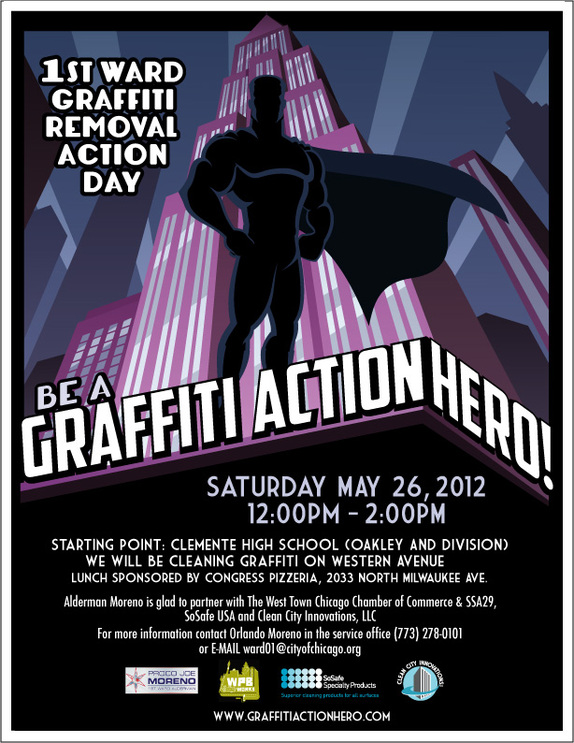
War on graffiti is underway in the 1st Ward -- superheroes are needed
Our Urban Times, May 25, 2012
A team of 1st Ward graffiti removal "heroes" are looking for like minded neighbors on May 26 at noon starting at Clemente High School, Division and Oakley, and June 2 at 10 a.m. at Wicker Park, 1425 N. Damen.
They swooped thru the community before with capes flapping cleaning up the visual landscape, recruiting others along the way. In one case a mother and son who used to live in Wicker Park, stopped as the team was preparing for their sweep up Damen. They decided to spend time to help with the clean-up.
The gratification and pleasure the "heroes" experience prompt them to want to spread the enthusiasm, relieving instructor Adam Natenshon of the duty of training all the newcomers. "It is amazing," said Natenshon, "that everyone gets so into the work. It is fairly quick and easy to remove the tags and that makes it fun too."
The events are sponsored by 1st Ward Alderman Proco "Joe" Moreno in partnership with additional supporters that include SoSafe USA, Clean City innovations, LLC, Wicker Park Bucktown Chamber of Commerce, SSA #33, West Town Chicago Chamber of Commerce and SSA #29.
Natenshon became aware of the line of graffiti removing products while working on the Hairpin Lofts project at Diversey and Milwaukee.
Our Urban Times, May 25, 2012
A team of 1st Ward graffiti removal "heroes" are looking for like minded neighbors on May 26 at noon starting at Clemente High School, Division and Oakley, and June 2 at 10 a.m. at Wicker Park, 1425 N. Damen.
They swooped thru the community before with capes flapping cleaning up the visual landscape, recruiting others along the way. In one case a mother and son who used to live in Wicker Park, stopped as the team was preparing for their sweep up Damen. They decided to spend time to help with the clean-up.
The gratification and pleasure the "heroes" experience prompt them to want to spread the enthusiasm, relieving instructor Adam Natenshon of the duty of training all the newcomers. "It is amazing," said Natenshon, "that everyone gets so into the work. It is fairly quick and easy to remove the tags and that makes it fun too."
The events are sponsored by 1st Ward Alderman Proco "Joe" Moreno in partnership with additional supporters that include SoSafe USA, Clean City innovations, LLC, Wicker Park Bucktown Chamber of Commerce, SSA #33, West Town Chicago Chamber of Commerce and SSA #29.
Natenshon became aware of the line of graffiti removing products while working on the Hairpin Lofts project at Diversey and Milwaukee.
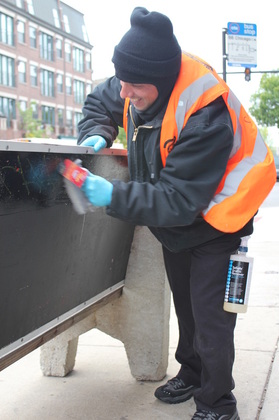
Graffiti Clean Up In Wicker Park's 1st Ward
on Saturday, May 5th at Noon
Our Urban Times, May 4, 2012
"Graffiti action days make a significant and tangible impact on the appearance of a targeted commercial corridor or neighborhood," says Community Activist Adam Natenshon. May 5 will be the second cleanup with 1st Ward Alderman Proco Joe Moreno's volunteers. Volunteers are to meet at Damen and Wicker Park Ave. at the Wicker Park entrance at noon for a two hour span of cleaning.
The first cleanup in Bucktown with Moreno volunteers had most participants reporting that they cleaned approximately 40 to 50 tags each during two hours.
"The events democratize the responsibility of graffiti removal from City Hall to the neighborhood, while simultaneously cleaning up the commercial corridor and empowering the local community," explains Natenshon.
Each volunteer is armed with SoSafe, a product Natenshon became aware of when facing a massive problem with the Hairpin Lofts in Logan Square.
According to Natenshon, the SoSafe graffiti products, which he is now distributing, are highly green and therefore very safe to use. They are fast acting and can completely remove most tags within a couple minutes without impacting the underlying surface. Safe enough to be used by non-professionals, a group of volunteers with spray bottles, sponges and buckets of water can effectively remove the majority of the graffiti in a commercial corridor including signs, non-porous surfaces, and painted surfaces like mailboxes, newspaper boxes, meter boxes and lamp posts. This leaves only the stubborn tagging on porous materials such as limestone and brick for professional removal.
"My dream is that the volunteers will be empowered to help keep the neighborhood clean because it is so easy and gratifying to remove graffiti," commented Natenshon.
on Saturday, May 5th at Noon
Our Urban Times, May 4, 2012
"Graffiti action days make a significant and tangible impact on the appearance of a targeted commercial corridor or neighborhood," says Community Activist Adam Natenshon. May 5 will be the second cleanup with 1st Ward Alderman Proco Joe Moreno's volunteers. Volunteers are to meet at Damen and Wicker Park Ave. at the Wicker Park entrance at noon for a two hour span of cleaning.
The first cleanup in Bucktown with Moreno volunteers had most participants reporting that they cleaned approximately 40 to 50 tags each during two hours.
"The events democratize the responsibility of graffiti removal from City Hall to the neighborhood, while simultaneously cleaning up the commercial corridor and empowering the local community," explains Natenshon.
Each volunteer is armed with SoSafe, a product Natenshon became aware of when facing a massive problem with the Hairpin Lofts in Logan Square.
According to Natenshon, the SoSafe graffiti products, which he is now distributing, are highly green and therefore very safe to use. They are fast acting and can completely remove most tags within a couple minutes without impacting the underlying surface. Safe enough to be used by non-professionals, a group of volunteers with spray bottles, sponges and buckets of water can effectively remove the majority of the graffiti in a commercial corridor including signs, non-porous surfaces, and painted surfaces like mailboxes, newspaper boxes, meter boxes and lamp posts. This leaves only the stubborn tagging on porous materials such as limestone and brick for professional removal.
"My dream is that the volunteers will be empowered to help keep the neighborhood clean because it is so easy and gratifying to remove graffiti," commented Natenshon.

